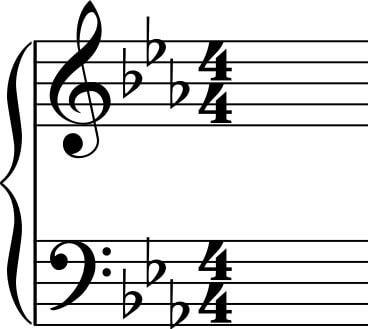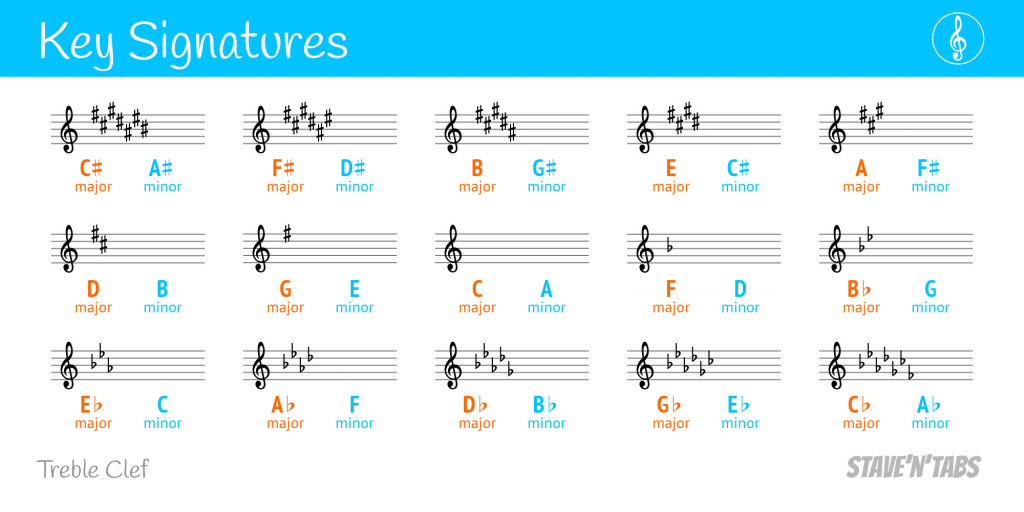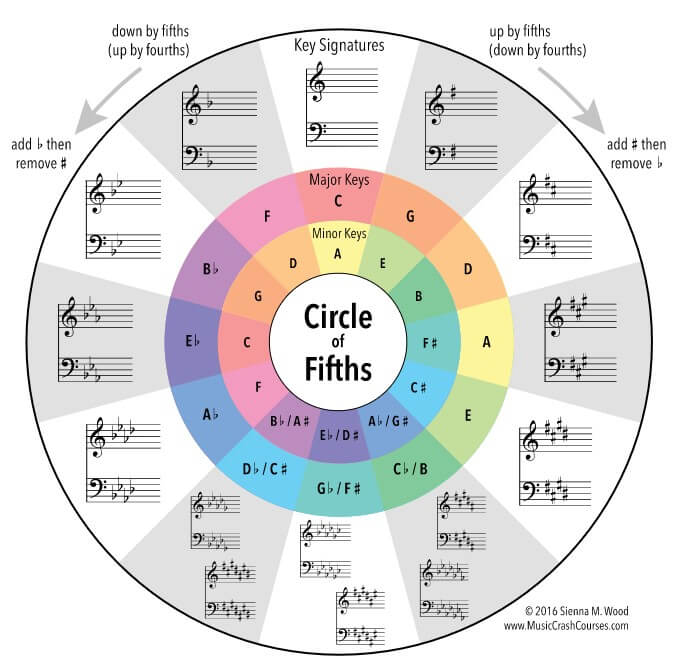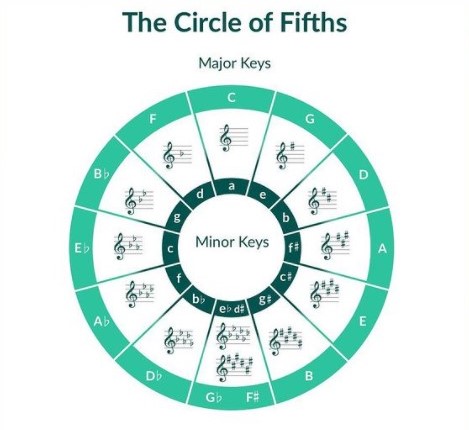A Music Producer’s Guide to Music Theory: An Introduction to Key Signatures and the Circle of Fifths
In music, key signatures describe what sharp and flat notes are in a piece of music. By using a key signature, we don’t need to notate a sharp or flat when each one pops up. A key signature sets the scale that the piece is written in. So, if you write a piece of music with the sharp notes C♯, F♯, and G♯, you’d need to signify that your piece of music is in the key of A Major as these are the three sharp notes in that key.
If we write a sharp or flat note that isn’t in line with the key signature we’re writing in then we would call this note an accidental. Key signatures indicate what sharp and flat notes there is a majority of in a particular piece of music. In our A Major example, if we wanted to write a C, F, or G note that wasn’t a sharp note, we would include the natural symbol next to the note in question to tell the playing musician it’s not a sharp note.

By indicating what sharp/flat notes are in a piece of music, in turn, key signatures describe what key the song itself is structured in.
So, What Are Key Signatures Again?
We get it, key signatures are a pretty complex topic to get your head around at first – despite how easy to understand we attempt to make it.

Key signatures are a collection of sharp (♯) or flat (♭) symbols that sit between the clef and time signature in sheet music. Key signatures tell us what key the song in question is structured in by telling us what sharp or flat notes are in the piece.

What Are Relative Keys?
You’ll notice that each major key (orange) has a minor key (blue) next to it. Each major has a relative minor key, and this is because each key that is relative to another has the same amount of sharp/flat notes in it.
Have you noticed how the sharp and flat symbols sit differently on the staff? Where the symbols sit in the key signature tell the playing musician what sharp/flat notes there are. This is down to the fact that there is a progressive order to the keys.
And this order of keys follows the circle of fifths.
We can compare the circle of fifths to the colour wheel in painting or even a clock. It’s a tool that organizes all 12 pitches (keys) around a circle so that each pitch is a perfect fifth (7 notes apart) apart clockwise and a perfect fourth (five notes apart) anti-clockwise.
Here’s a diagram that presents the circle of fifths:

In the image, you can see that the major keys are represented on the outer wheel while the minor keys are represented on the inner wheel.
The minor keys that sit below each major key aren’t there by chance – the wheel represents what keys are relative to one another. So, A ♭ is relative to F Minor, and D Major is relative to B Minor.
You’ll also spot that each key signature has an added sharp (#) connotation every time you move clockwise from the top. C Major has 0 sharp notes in it, so there are 0 # connotations. G Major has one sharp note in it, so there is one # connotation.
On the flip side, F Major has one flat note in it, so there is one ♭ connotation as you move anti-clockwise from C Major. B Flat has two flat notes in it, so there are two ♭ connotations in its key signature, and so on.
The order in which sharps are added follows the circle of fifths clockwise from F Major (sharpening F>C>G>D>A>E>B), and flats follow the circle counterclockwise from B flat (flattening B>E>A>D>G>C>F). To help you remember this, there are some handy little mnemonics.
For adding sharps clockwise: Father Charlie Goes Down And Ends Battle.
For adding flats anti-clockwise: Battle Ends And Down Goes Father Charlie.
But this is a fairly complicated diagram. Here’s a simpler one:

The circle of fifths displays what major and minor keys are relative to one another and what key signatures have what amount of sharp/flat connotations in them.
How to Read Key Signatures
So, with all of this in mind, how many sharps do you see in the melody below?

In this melody, we have C♯, F♯, and G♯. As there’s no key signature noted between the clef and the time signature we need to mark the sharp notes each time they occur. But if we had a key signature noted at the start of the piece, we could make life so much easier for ourselves.
So, take a look above and see what key has three sharp connotations in it!

That’s right, it’s the key of A Major. If you thought ahead you may have googled what key has C♯, F♯, and G♯ in it and would have already known that. Great job!
Take a look at how much simpler the melody looks now. By adding the key signature and avoiding having to add a # symbol every time a sharp note pops up, our writing and the players reading is made so much smoother!
Changing Keys
We’re sure you’ve noticed a lift or flattening in and of a song before. It may well be that you noticed a change in key! Changing keys is a great way to keep your listener interested. And, usually, it doesn’t require you to change any structural elements of your melodies. You’ll need to adjust the key signature up or down, which is usually by a semitone (half step).
If your melody is in the key of C major, but you want to uplift a certain section, then you could shift the key up one-half step to D♭ major.
On the Mixxed site, always ensure that our samples are labelled with the key they’re in. That’s why you’ll be able to simply drag and drop your samples from the MIxxed site into your project and not have to worry about pitching up or down.
The sampling revolution has risen in popularity and shaped music since the early 1970s. Sample culture continues to transform how millions of artists and producers do their thing in DAWs.
You too can break conventional norms, challenge the status quo, and open Pandora’s box of sound design.
Mixxed works with a growing number of sample labels and contributors to provide you with a premium sample subscription service that’s more accessible than any before.
You’ll have access to our growing catalogue of loops, one-shots and sound effects that you can browse, download and keep forever for less than $3 a month.
Sign up today to find your sound!
